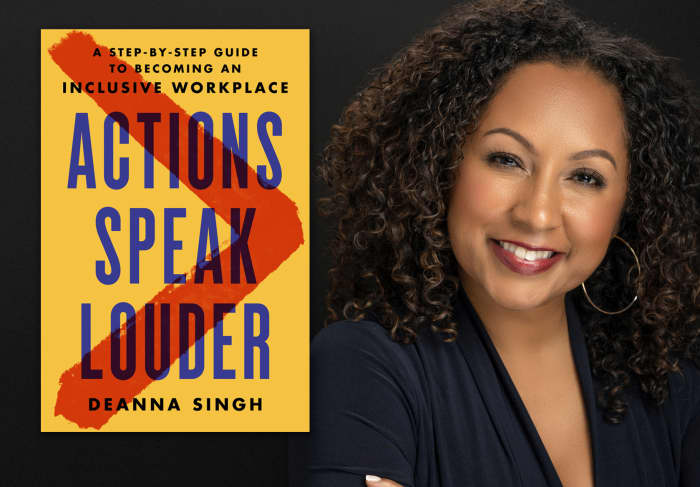This post was originally published on this site
When I told my great-uncle Buck I was working on a new book about diversity, equity, and inclusion in the workplace, he was worried. He questioned whether I wanted to write about “how racism cuts people down.” It wasn’t like him to caution me about my work so I prodded him a little. He sighed and began to tell me a story about my family that I had never heard before.
When slavery ended in the U.S., Uncle Buck’s grandfather — my great-great-grandfather — began farming for himself in South Carolina. His crop was cotton. It took some hard work but in due course, he became the biggest cotton supplier to the county’s Black community.
Eventually, people began to note that if he could only sell to white people, he could expand his business even more. It was food for thought, but he was hesitant. Selling across the color line was dangerous. However, he came up with what he thought was a reasonable solution: He would farm the cotton and hire a white man to sell it outside the Black community.
It was an entrepreneurial impulse that ended up costing him his life. Uncle Buck refused to go into gory details, except to say that his grandfather was lynched by the white townspeople for selling to them. Buck had witnessed it all.
Uncle Buck went on to get a college degree and ascended to trusted leadership positions in his government job. Yet, all these years later, his experience of what could happen to a Black person with professional ambition still haunted him. Each time he took a step up the ladder, he feared a mob of one kind or another might be waiting for him.
“ Between 1882 and 1968, a Black person in the U.S. was attacked by a mob every nine days on average.”
When I tell this story, most people react with shock and disbelief. When I tell it to Black professionals, they will nod in recognition. Often, they have similar family stories of racial violence against an enterprising ancestor. Between 1882 and 1968, a Black person in the U.S. was attacked by a mob every nine days on average. Many of these violent crimes were recrimination against people like my great-great-grandfather, whose only crime was being too industrious for their own good. It is a heavy cultural burden that can’t be healed in just a few generations.
The truth is that the American dream didn’t become a reality for everyone with the signing of the Declaration of Independence. It wasn’t magically available to Black people at the end of the Civil War, and Dr. Martin Luther King was still struggling for equal access to it a century later. Even now, until Black professionals no longer feel the specter of the mob every time they enter their place of business, it can’t truly come into being.
Every time a Black professional hears another racist joke, is subject to false equivalence, or fails to see a single face that looks like theirs on a prospective employer’s website, they are reminded of the fact that Black people in the U.S. have endured a centuries-long struggle to advance against all odds and there is still a long way to go. For every ancestor who swung from a rope for wanting to succeed, there is a traumatized Uncle Buck who was taught that success is fraught with peril. And for every Uncle Buck, there are many more who were taught that it is safest not to try at all.
“ Black people go to work in the historical shadow of ‘colored only’ signs, beatings, whippings and hangings. ”
To create a work environment that helps all people achieve their potential, we must all bravely face that (among many other things), Black people go to work in the historical shadow of “colored only” signs, beatings, whippings and hangings. Back then, Black people weren’t able to separate their personal and cultural lives from their professional lives. They couldn’t leave their Blackness at home, and that hasn’t changed today. As a result, there is enormous generational fear that all of their accomplishments could be yanked out from under them at any moment, and that translates into workplace stress today.

Portfolio
It might seem unreasonable to some that a Black professional would feel like racism in the workplace could do them real harm — as if there were a mob waiting in the conference room. But numerous studies support that the history of violence against Black people in the U.S. has taken an enormous emotional toll, leading to inflammation, hypertension, anxiety and other health conditions. What some might think of baggage “best left in the past” is actually historically justified fear.
“ Diversity, equity, and inclusion leaders have important work to do: help organizations face the past.”
Committed DEI work can make a difference. Diversity, equity, and inclusion leaders have important work to do: help organizations face the past so they can understand the nuances of how today’s workplace is still harmful to many. That is the departure point from which to make organizational culture and policy changes that will help build a better future for everyone.
This requires self-reflection, challenging conversations and behavior shifts that can seem difficult to endure. But the payoff for organizations courageous enough to transform is that it will help them attract and retain the best and most innovative talent. It will also yield the satisfaction that comes with creating a deep, mutual sense of workplace belonging.
Deanna Singh is the author of Actions Speak Louder: A Step-by-Step Guide to Becoming an Inclusive Workplace (Penguin Random House, May 2022). Singh is a DEI leadership expert and the founder and chief change agent of Uplifting Impact, a diversity, equity, and inclusion consulting firm that helps individual leaders and companies create inclusive workplaces.

